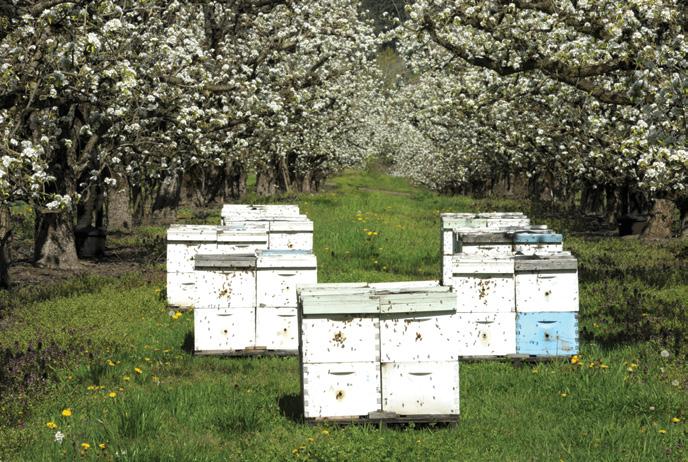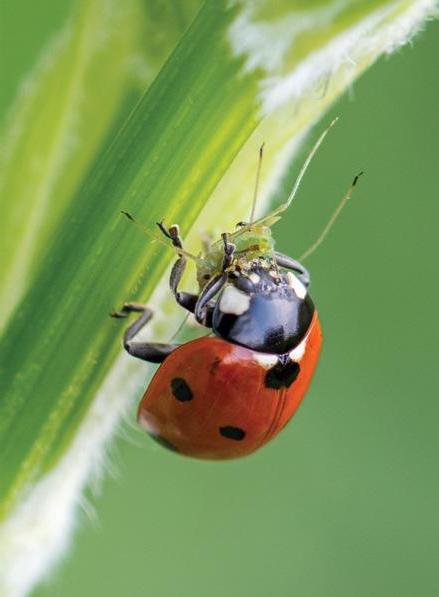
2 minute read
The value of pollination
Honey bees are a key pollinator on orchards.
Survey of orchadists reveals awareness of the value of pollination is high
BY WENDY WILKINS SUSTAINABLE AGRICULTURE PROJECT MANAGER, SWCC
Asurvey of twenty orchardists in the South West Natural Resource Management Region found that only 5% of those surveyed described their understanding of pollination of their crop as “poor” with threequarters saying they encourage pollinators such as insects and birds onto their properties, mainly by maintaining “weeds” in their inter-rows.
The survey is part of a five-year project being undertaken by the South West Catchments Council (SWCC) that works with farmers to improve the pollination services provided by beneficial insects and other pollinators through revegetation programs that enhance food availability for pollinators. Revegetation is designed to improve pollination services and biodiversity, ensuring the farm is more resilient and can better withstand the impacts of climate change. SWCC Project Manager, Wendy Wilkins, who is working with three orchardists — two in Balingup and one in Winnejup — said the survey was designed to gauge producers’ current knowledge and attitudes to pollination and integrated

3 HOVERFLIES and flies are important pollinators in orchards.
pest management, remnant vegetation and revegetation and farm resilience. The survey will be undertaken again at the end of the project to see if knowledge and attitudes have changed. “The majority of respondents believe the key pollinator for avocados is the honeybee, although hoverflies and flies also appear to be considered important,” Ms Wilkins said. 3 THE survey revealed only 10% of respondents bring honeybee hives into their orchards when their orchards are flowering for pollination service. “Nevertheless, only 10% of the respondents bring honeybee hives into their orchards when their orchards are flowering for pollination services,” she said. Around 70% of orchardists surveyed also practice Integrated Pest Management (IPM) with the most common practice being assessing the number of pests prior to spraying and when numbers reach critical levels using more selective sprays or predatory insects. Almost 75% of respondents believe that remnant vegetation and vegetation is beneficial to production, with not one person saying it was detrimental. The main benefit listed was habitat for pollinators and beneficial insects followed by greater biodiversity and reduced wind and water erosion. The main risks identified for vegetation were fire and as habitat for pest animals. The large majority surveyed (80%) believe the changing climate is affecting how they farm, citing reduced rainfall, increased temperatures and hail affecting productivity. The main strategies identified to deal with these changes related to accessing more water sources and water conservation. In fact, 90% of respondents have

3 REMNANT vegetation provides habitat for pollinators and beneficial insects.

implemented water conservation strategies, particularly using mulch and soil moisture instruments. The majority have also diversified their income streams to spread their risk. “I’m very grateful to those who undertook this survey. Growers were incredibly generous with their time,” Ms Wilkins said. “It’s heartening to know that producers are interested in our work and I look forward to sharing our findings from the project with them,” she concluded.
MORE INFORMATION
To find out more about the project you can go to SWCC’s website at https://swccnrm.
org.au/our-work/farming/pollination-andfarm-resilience/
Contact Wendy Wilkins, Project Manager, 0448 939 307. This project is supported by the South West Catchments Council with funding from the Australian Government’s National Landcare Program.










